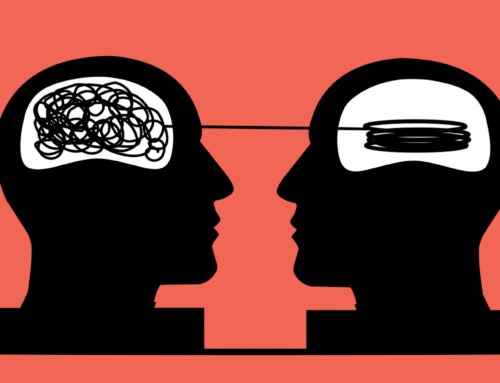Individuals with OCD feel that they must repeat these thoughts and behaviors again and again.
Around 1 percent of people in the United States have experienced OCD in the past year.
The symptoms of OCD can encroach on all aspects of a person’s life — including work, education, and relationships. OCD symptoms are generally broken down into two types: obsessions and compulsions.
People with OCD usually spend at least 1 hour every day contending with their obsessions and compulsions.
Obsessions are defined as thoughts or urges that cause anxiety (such as fear of germs), thoughts about hurting yourself or other people, or a craving to have objects in a perfectly symmetrical order. Obsessions might also take the form of persistent and unwanted mental images.
Compulsions are specific behaviors that people with OCD feel that they have to do when they have an obsessive thought. These may include washing excessively, ordering things in a certain way, or counting compulsively.
Though a person with OCD may feel instant relief from performing the rituals associated with their obsessive thoughts, they do not experience pleasure from this. Rather, such thoughts and actions contribute to a rising sense of anxiety.
OCD symptoms can either improve or worsen over time. But, if a person who has OCD is able to recognize that they are experiencing excessive unwanted thoughts or unable to control their behavior, they may be able to take steps to help themselves.
Treatments for OCD
If you think that you might have OCD, you should speak to your doctor. OCD is usually treated with medication such as selective serotonin reuptake inhibitors, psychotherapy such as cognitive behavioural therapy (CBT), or a combination of the two.
Some people with OCD find CBT helpful because this type of therapy teaches the person how to think differently about their obsessions and compulsions, helping them to overcome these unwanted thoughts and behaviors.
Last year, Medical News Today reported on a study that used functional MRI to examine how the brains of people with OCD responded to a type of CBT known as exposure and response prevention (ERP).
ERP involves exposing people who have OCD to things that trigger their symptoms and works on encouraging the person to resist following their usual urges in these situations.
The team behind that study found that the brains of people with OCD who had ERP displayed a significant increase in connectivity between eight brain networks.
The authors of that study suggest that these brain changes could represent how the participants are activating different thought patterns and learning new behaviors not based on compulsions.
Around 30–60 percent of people who receive treatment for OCD find that it does not help, however. So, finding other strategies to help manage symptoms of OCD is important.
– David Railton
Read more: How to Cope With OCD








Leave A Comment